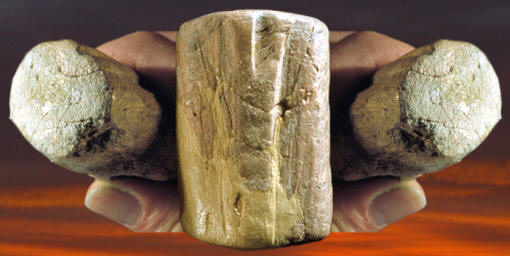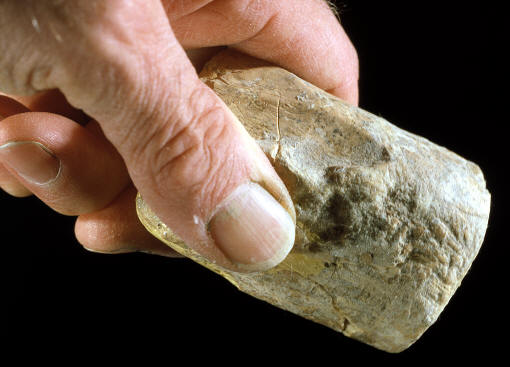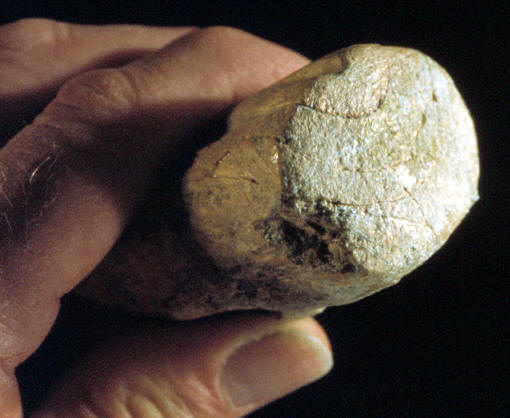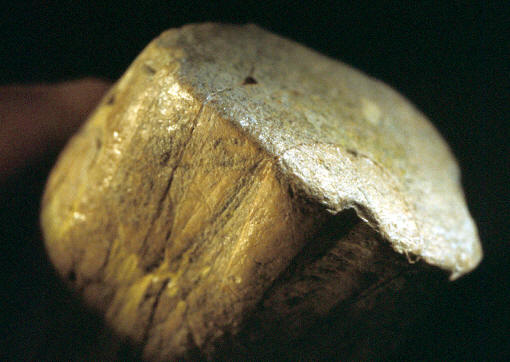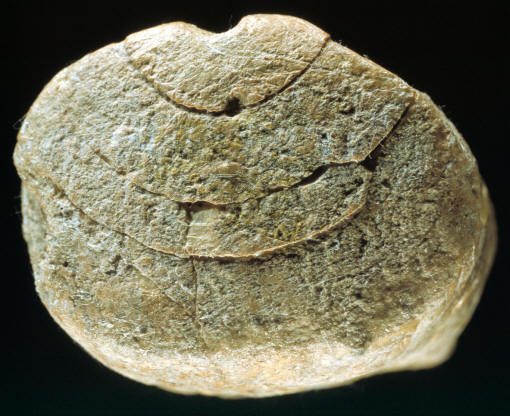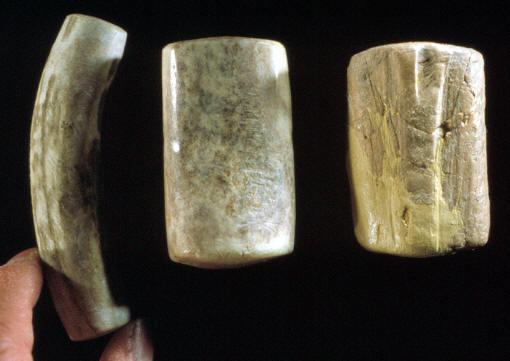|
||
|
||
|
"Ivory
cylinders similar to the one figured here (the
Blackwater Draw billet-burnisher) for Clovis
(also) occur in Upper
Paleolithic Eurasian assemblages."---1991,
Jeffrey J. Saunders, George A. Agogino, Anthony T. Boldurian, and C.
Vance Haynes, Jr., "A Mammoth-Ivory Burnisher-Billet From The
Clovis Level, Blackwater Locality No. 1, New Mexico," Plains
Anthropologist, Vol. 36, No. 137, p. 360.
It seems there has been a mystery surrounding this unique artifact, one that has continued for many years. As explained by Saunders in 1991 and by Haynes in 2002 this rare Clovis artifact disappeared and no one knew where it was. There has been some minor distress over this issue. Hayes writes that, "but while the artifact was being cast-replicated, the casting technician died, and the implement is now lost." Saunders wrote that, "---the loss of the J. D. Murray artifact (billet/burnisher) is all the more regrettable (because ivory does not preserve very well on Clovis sites)." But as illustrated in this article, it has been rediscovered. Dennis Stanford located it in a box of unrelated artifacts at the Smithsonian. |
||
|
This billet/burnisher was discovered in 1962 by J. D. Murray an employee of the Sam Sanders' Gravel Pit located in Roosevelt County, New Mexico. The gravel pit, known as Blackwater Draw Locality No. 1, is recognized as the original type site for Clovis points. Besides several different types of Clovis tools, the bones of mammoth, horse, extinct bison and camel have also been found there. The first documented in-situ artifact finds of flake knives and end-scrapers were made in 1933. Some of the most important finds were made in 1936 and 1937 by John L. Cotter when he discovered Clovis type points in direct association with mammoth bones. |
||
|
||
|
Clovis sites are almost always identified specifically from stone tools. Only on rare occasions do organic materials offer any evidence that a Clovis site exists. The highest percentage of all bone and ivory Clovis artifacts have come from Florida rivers. For example, nine different types of ivory tools have been identified from the Aucilla River in Florida. An ivory atlatl hook made from the lower tusk of a mastodon was discovered in the Ichetucknee River in Florida. Some Florida rivers have unique anaerobic qualities that protect these fragile artifacts from air and bacteria. |
||
|
||
|
Very few Clovis sites outside of the Florida rivers have produced any bone and ivory artifacts. Most of what has been found are in the form of bone rods that are beveled on one or both ends. Boldurian writes that, "---60 years of investigation have produced relatively few of these (bone rod) artifacts, thereby constituting a diagnostic but rare item in the Clovis tool kit." Thirteen bone rods were discovered on the East Wenatchee site in Washington, another eleven bone rods, two of which are complete, are reported from the Anzick site in Montana, two more were found on the Blackwater Draw Locality No. 1 site in New Mexico and one ivory rod/projectile point was found on the Sheaman site in Wyoming. The Sheriden Cave site in Ohio also produced two small but complete examples. |
||
|
Other examples of rare bone and ivory artifacts found on Clovis sites include two large chopper/cleavers made from mammoth long bones found on the Lange Ferguson site in South Dakota. A bone shaft wrench found on the Murray Springs site in Arizona. Plus the ivory billet/burnisher illustrated in this article and the end of a mammoth tusk that had been grooved and detached (a semifabricate) from the right tusk also discovered on the Blackwater Draw site. Various other examples of ivory and bone Clovis artifacts have also been reported from other sites but they are very few in number and most are fragmentary. |
||
|
The billet/burnisher from Blackwater Draw has been described as a combination tool that was used as both a flintknapping tool and a hide processing tool. It's described as a short, cylindrical section of mammoth ivory with slightly convex ends. It's been compared in shape to the head of a two pound hammer. It measures 3 inches (7.35 cm) long, 1 13/16 inches (4.6 cm) wide and 1 5/16 inches (3.48 cm) thick (the ivory may have shrunk slightly since these measurements were first made). |
||
| CONTINUE ON TO PAGE TWO | ||
|
"REFERENCES"
1957, Wormington, H. M., "Ancient
Man In North American," pp. 47-50. |
||
